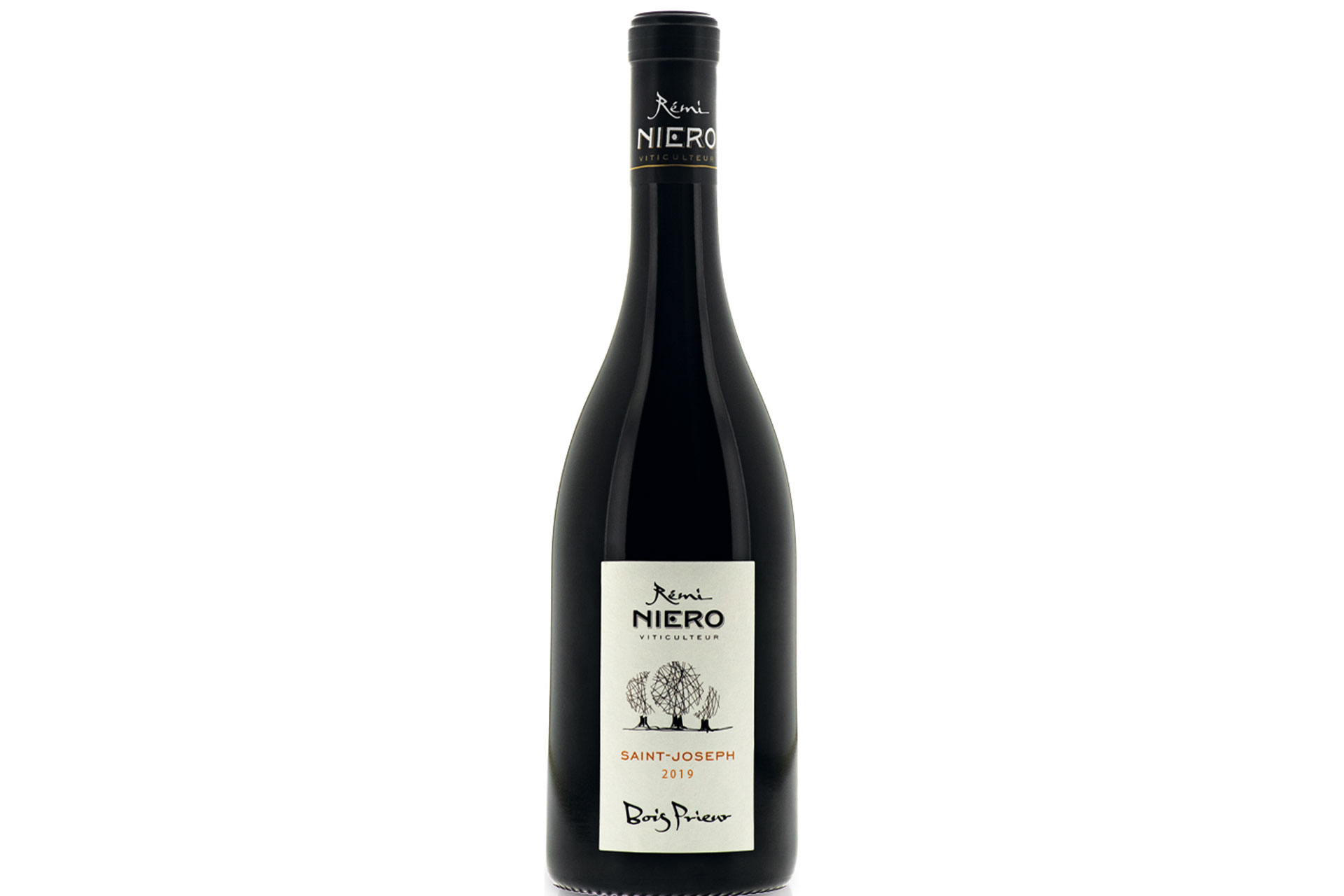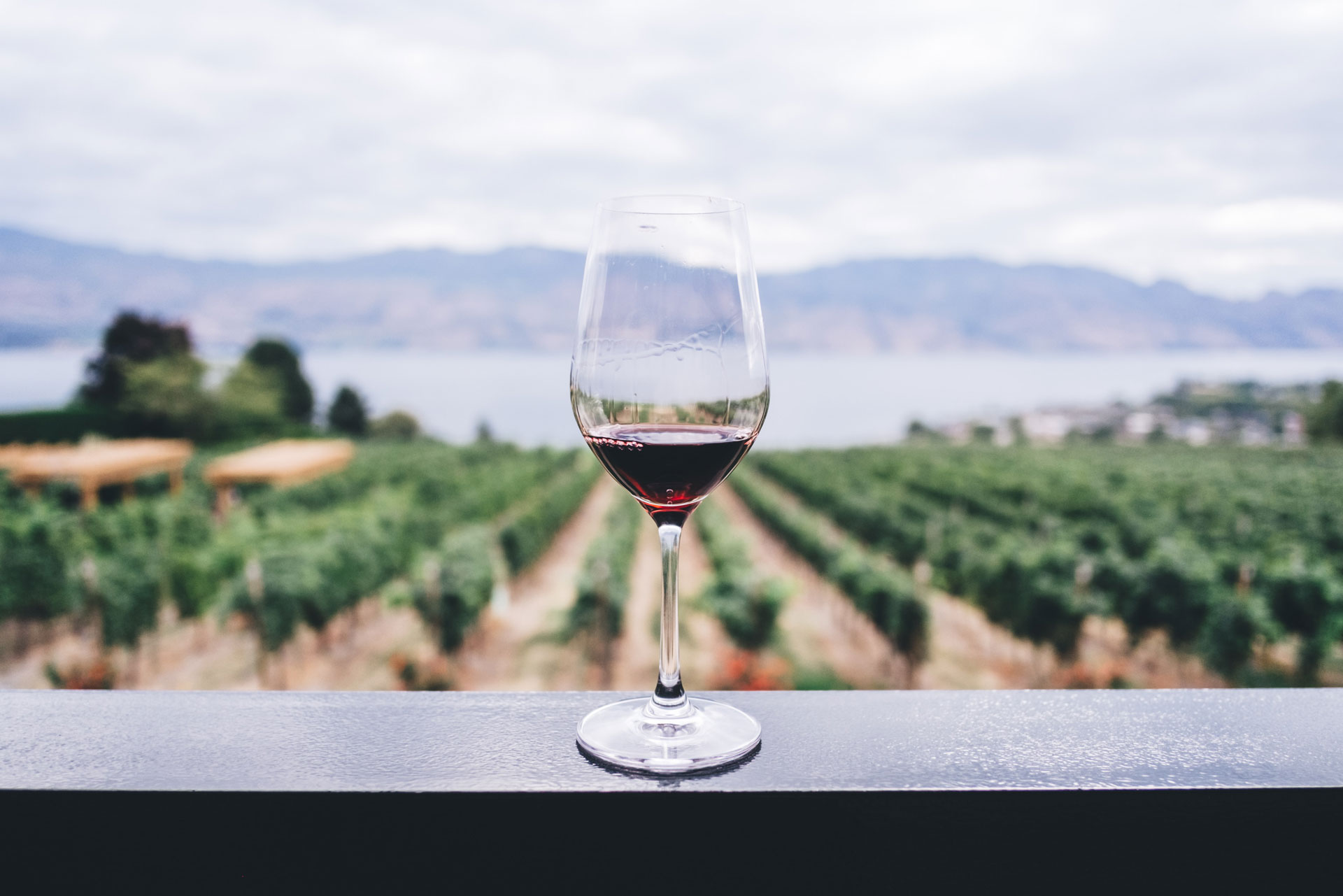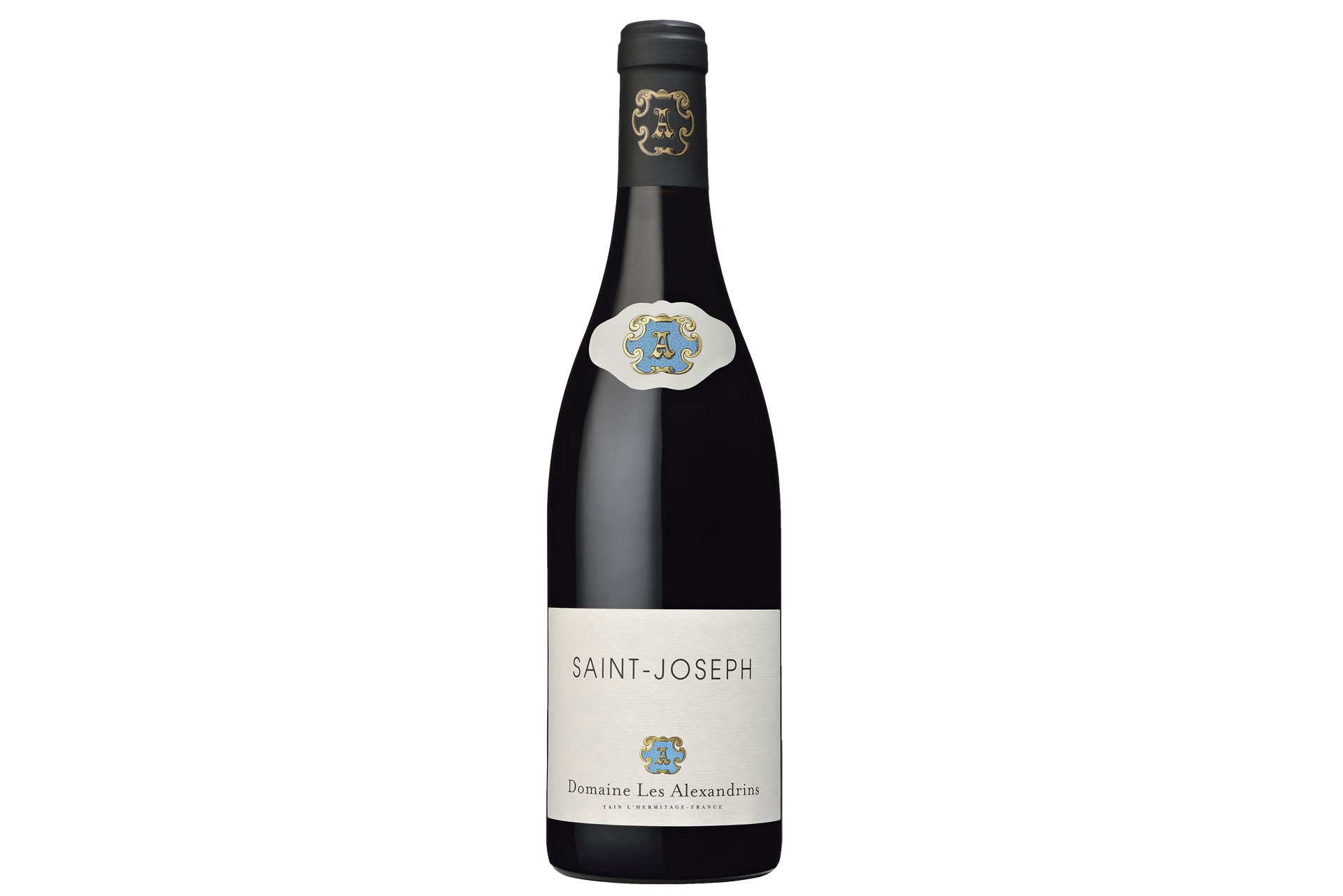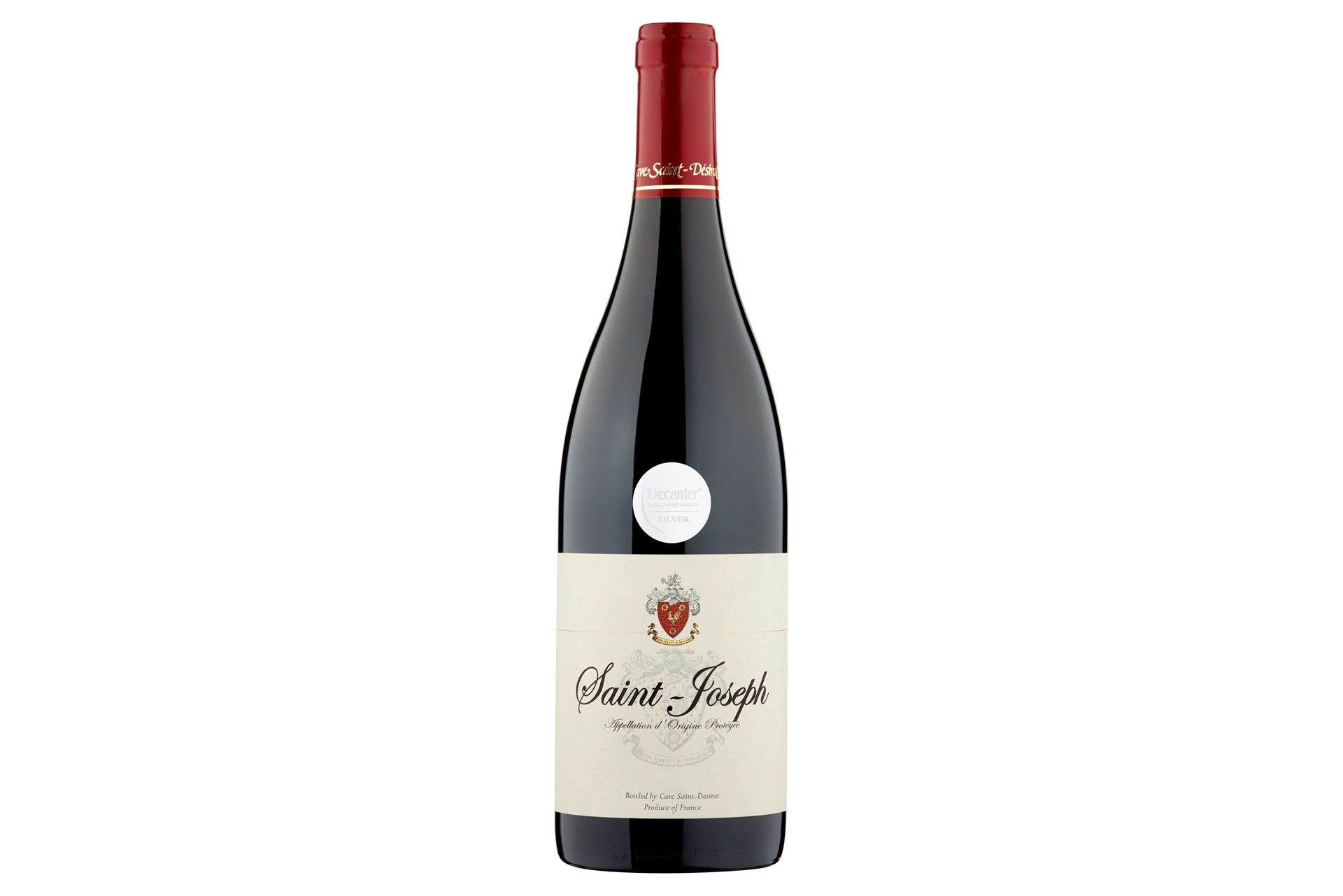Bois Prieur Domaine Rémi Niero 2017
With hints of violet and black pepper, 100% Syrah.
£33.50, leaandsanderman.co.uk

By
5 years ago
Let’s drink to Saint-Joseph

An acquired taste, perhaps – and best served with food, but once you’ve found Saint-Joseph wines, you’ll never look back, says Sarah Hyde.
Saint-Joseph hails from the northern Rhône, a region famed with a tradition of producing wine that goes back to Roman times and perhaps also for Saint-Joseph’s better known, more glamorous cousins, Hermitage, Côte Rôtie, Croze Hermitage. The AOC was created in 1956 and named after the patron saint of betrayed husbands and moving home, the latter being what initially attracted me to the wine. Is this the perfect gift for someone moving house or trying to sell their home?
Saint-Joseph is a wine that can and should be drunk when it is not too old, the best examples come from areas that surround Mauves, Tournon and St-Jean-de-Muzols. Locals talk of ‚the drop’ which means the wine is nice when it’s young but after four years it loses its charm, regaining it after eight if it is by a good maker. Like its smarter cousins, the wine made from the Syrah grape, otherwise known as Shiraz and Saint-Joseph, illustrates brilliantly how terroir, the land in which the grapes are grown, forms flavour.
Vines are grown on steep dry-stone terraces on the granite hills of the west bank of the Rhône. The west side of the river shares the same granite as Hermitage, which is grown on the east. At Saint-Joseph there is more sand in the ground rather than water-retaining clay and this, and the different exposure of the grapes, make a vital difference to the taste of the wines – and this wine tastes remarkable.
You’ll taste flavours of spicy pepper, floral notes of violet, all underpinned by granite which gives a unique minerality and tension to what can be a very full-bodied grape variety. The tannins mean that it is a little leaner than its velvety and voluptuous relatives and Saint-Joseph can be an acquired tast – and it’s best served with food. Charles Lea of Lea and Sandeman likes to pair his Saint-Joseph with duck.
‘The best wines of Saint-Joseph have some of the elegance of Côte Rôtie, which for me is the finest of the Northern Rhone reds,’ explains Charles. ‘The appellation covers a wide, possibly too wide an area, but the best vineyards are on the same steep slopes on similar soils (schist clays and granite) with the same east or south-east facing exposition, stretching over 40 miles along the west side of the Rhône from Chavanay to Valence. In the north, the fruit tends toward bright and juicy and black-pepper and spice, with less of the black olive tapenade flavours of Crozes Hermitage. For me, it’s this taut juicy elegance that makes the wines so easy to like. The “Bois Prieur” from Rémi Niero is from a steep slope above the village of Saint Pierre de Boeuf, in the northern part of the appellation, which is perhaps why it so closely resembles the Côte Rôtie style.’
Often the finest examples come from producers who also make other fine wines, like Nicolas Jaboulet from Domaine Les Alexandrins, whose family have been making this wine for generations. When asked why this wine was different from the other more expensive and famous wines in the region which he also produces Nicolas Jaboulet replies, ‘Where Hermitage faces south and gets sun all day, a lot of the Saint Joseph on the west bank faces the east, so loses the sun after around 2pm – and it is this shadow which makes the wines fresher.’
Nicolas also emphasised that, ‘Saint-Joseph is not a wine that you can just pour and drink, this wine needs to develop in the glass and the more you return to it, the more it gives,’ and that is certainly true – the flavours are remarkable. There is a certain buzz about this wine at the moment and Nicolas believes that the main reason is the competition between the growers pushing up the quality of the wine. What is clear is that not all Saint-Josephs taste the same, as award-winning wine writer Matt Walls is keen to explain in his latest book Wines of the Rhône.
‘If you know a wine region, you do get to know the taste of each specific appellation. In the Northern Rhône, Cornas tastes different to Hermitage, which tastes different to Côte-Rôtie, which tastes different to Saint-Joseph. You can even taste the difference between different vineyards that lie next to each other within an appellation. It’s often down to the make-up of the soils, and the specific microclimate.’
What is it about the landscape that makes Saint-Joseph so different? ‘Saint-Joseph is a long, thin appellation, around 50km long from its northern to its southern pole. There is some land on the flat near the Rhône River, but the best vineyards are those that scale the bank of ancient granite that make up the west bank of the Rhône. Here there are tributaries that tumble down from the Ardèche plateau above, and these cut into the granite slope, forming a succession of rickety south-facing slopes as you follow the river however the upkeep of these steep, walled terraces is backbreaking work.’
There also seems to be a real taste of tannin in this wine, which Matt explains: ‘Northern Rhône Syrah does have a particular tannic texture, for me it’s a blend of energy and salinity from the granite along with a knot of tannin that’s very characteristic of the grape variety. Sometimes winemakers throw the stems in with the grapes that adds even more texture. I love the way this all combines to create a very strict, tense feeling on your tongue when you drink them, it’s cleansing and enlivening which makes them work so well with food.
Finally, what qualities should we be looking for in a fine Saint-Joseph? ‘For me, the best red Saint-Josephs combine freshness, fragrance and elegance. They’re quite measured wines, never massive or heavy. They should be savoury, drinkable and refreshing wines.’
With hints of violet and black pepper, 100% Syrah.
£33.50, leaandsanderman.co.uk

ADVERTISEMENT
Saint Joseph is produced on the terraces of Tournon sur Rhône. This wine has a lovely spice (black pepper) and black fruits aromas while the tannin gives it structure.
£31.99. libertywines.co.uk

ADVERTISEMENT
Bottled at Cave Saint Desirat Saint-Joseph from the Northern Rhône. Made from the Syrah grape, An elegant wine, with a powerful and lively structure of fruits spices, vanilla aromas and minerality from granitic soils.
£15.99. waitrose.com

Featured Image: Unsplash
DISCOVER MORE:
Best Wine Delivery Services & Subscriptions / A Guide To Sustainable Wine